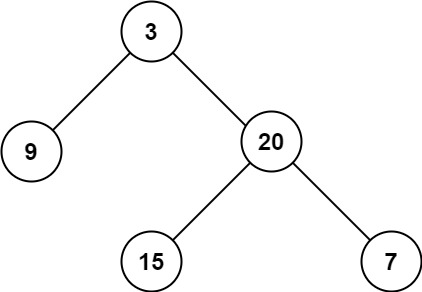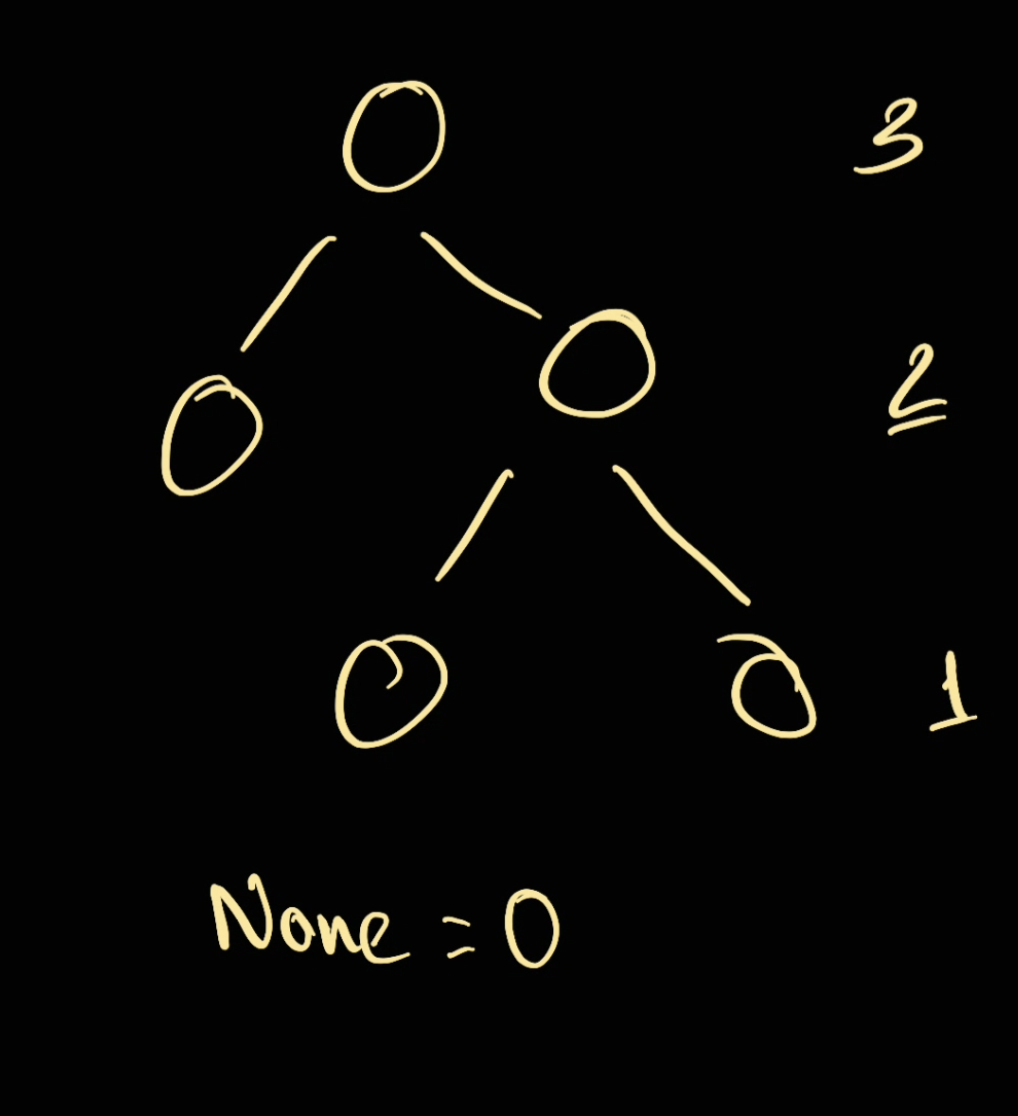Maximum Depth Of Binary Tree
Question
Given the root of a binary tree, return its maximum depth.
A binary tree's maximum depth is the number of nodes along the longest path from the root node down to the farthest leaf node.
Example 1:

Input: root = [3,9,20,null,null,15,7]
Output: 3
Example 2:
Input: root = [1,null,2]
Output: 2
Solution
For this question we can do either tail or non-tail recursion.
Tail recursion
For tail recursion, we want to keep track of the level and pass it to the children nodes. Therefore we have
class Solution:
maxDepth: int
def maxDepth(self, root: Optional[TreeNode]) -> int:
if not root: return 0
self.maxDepth = 0
self.dfsCountHeight(root, 1)
return self.maxDepth
def dfsCountHeight(self, node: Optional[TreeNode], level: int) -> None:
if not node: return
self.maxDepth = max(self.maxDepth, level)
self.dfsCountHeight(node.left, level + 1)
self.dfsCountHeight(node.right, level + 1)
Time complexity: — is the number of nodes
Space complexity: — the height of the binary tree
Non tail recursion
For non-tail recursion, we want to start from the bottom up. So for example given the tree:

So in our case, we want the root node to return 3. As a result, we want in our base to return 0, so we can populate up to 3 in the root.
class Solution:
def maxDepth(self, root: Optional[TreeNode]) -> int:
if root is None: return 0
left = self.maxDepth(root.left) + 1
right = self.maxDepth(root.right) + 1
return max(left,right)
Time complexity: — is the number of nodes
Space complexity: — the height of the binary tree